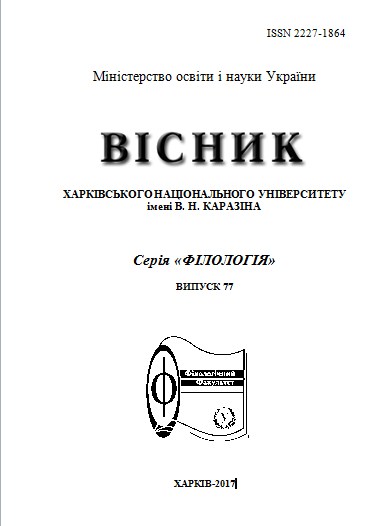Andreev’s play «Requiem»
Abstract
In article is devoted to the thorough analysis of poetics and genre peculiarities of L. Andreev’s play « Requiem». The study showed that the important role in this work play modernistic principles of representation of world and person as neomythologism, intertextuality, motifity, dominating of symbolical types and characters, irony, grotesque.
This is the “new drama” which moves behind the scene external conflict and the action, the key role is played by internal conflict and subtext, which is finding realization in neomifological storyline. The study of L. Andreev drama’s chronotop in various periods of his work, along with variability, demonstrates his apparent conceptual uniformity. The local framework, where he transfers the action in the play "Requiem", represents only spatial variations of the locuses of early dramas and plays of the second half of the 1900s, the invariant of which can be considered the room where the Life of Man flows in the work of the same name. Furthermore, in the play, aside from the spaceless chronotope offered to the spectator, it is steadily found, often dominating the open "space" chronotope, acquiring the symbolic spatial outlines of emptiness and night.
The original model established by L. Andreev in the first dramas was invariant and only varied in subsequent plays.
intertext; autointerext; paratext; mythopoetics; motive; chronotopDownloads
References
2. Московкина И. И. Между «pro» и «contra» : координаты художественного мира Леонида Андреева / И. И. Московкина. − Х. : ХНУ имени В. Н. Каразина, 2005. – 287 с.
3. Эртнер Е. Н. Поэтика «игры» в пьесе Л. Андреева «Реквием» / Е. Н. Эртнер // Эстетика диссонансов : О творчестве Л. Андреева. − Орел, 1996. − С. 102–104.




